Apple Watch Series 9 vs. SE 2: 12 Reasons to Consider an Upgrade

When someone new to Apple Watch asks me which one to get, I’ve been saying the same thing for four straight years: get some version of the SE.
But after Apple's most recent keynote, I was convinced that I'd finally be changing my tune because of the Series 9's potential game-changing double-tap feature and faster chip.
My conclusion? After a couple of months of wearing both watches: the Series 9's new features aren't all that game-changing, which means the Apple Watch SE 2 is still the better buy for most users because it's more affordable and comes with every essential feature.
The Series 9's minor upgrades, like the precise iPhone finding or the extra screen real estate aren’t individually worth the extra $150. However, if a bunch of the dozen or so minor upgrades appeal to you, the Series 9 is a viable choice.
The SE has always lagged behind the premium build quality of the $700 stainless steel models found with the high end models, which is why I would typically recommend the Series 9 to those prioritizing build quality. But the situation is different now that the Apple Watch Ultra exists because it’s made with great materials and has a few extra features at a similar price.
We’ll get into the Ultra a bit later, but for now, let's dive into the key differences between the Series 9 and the SE 2, and help you decide if the upgrade is worth it.
1. Minor features
Both the SE 2 and Series 9 have a compass, always-on altimeter, fall detection, cellular plan option, and Family Setup. Before going into major differences, let's touch on seven minor features. While not game-changers, if several of these resonate with you, the Series 9 might be a better fit.
- iPhone finding has been a feature since day 1 of Apple Watch, but it got an upgrade with the Series 9 because the new second-generation U1 chip gives it "precise finding." Tap on the phone shake icon and your phone will beep like normal, but the watch screen will show you how far away your phone is dynamically, just like an AirTag. The U1 also allows for HomePod handoffs.
- The Series 9 lets you type with a keyboard on both the 41mm and 45mm models. It’s not ideal and I’m not a huge fan, especially on the 41mm model, but it can be useful in a pinch.
- An ECG reader, which is accessible by holding a finger on the Digital Crown for 30 seconds.
- A temperature sensor, which is primarily used for ovulation tracking, but it could be used for spotting other health trends.
- Dual-band WiFi support (2.4GHz and 5GHz) is another feature that exists but probably won’t be super helpful to most.
- The Series 9 has a 3rd-generation optical heart sensor compared to the second generation on the SE 2. In side-by-side testing over the last few years, I haven't noticed a difference in real life.
- The Series 9 can get twice as bright as the SE, which might be helpful if you spend a ton of time outside. But I've never had any issue seeing my watch outside in eight years, and I only keep mine on 50% brightness.
2. Always-On Screen
Series 9’s biggest feature upgrade from the SE is the Always-On screen. To understand the importance of the Always-On screen, first, let’s go over how the screen on the SE works.
How the screen turns on:
- The SE’s screen turns black when it isn’t in use. Twist your wrist towards your eyes to wake the screen. It should happen naturally and not feel forced. The twist to wake worked 98% of the time.
- Tap on the display to light it up.
- Twist the Digital Crown to light up the display slowly, then twist it back to make it go black.
On the other hand, the Series 9's display never fully turns off. It dims to a low brightness and drops the refresh rate to 1Hz when inactive, yet remains visible for time and notifications. Reactivating to full brightness is easy with a wrist move, screen tap, or crown twist.
While the Always-On feature gives the Series 9 a traditional watch feel, by always displaying the time, I usually keep it disabled. It's most useful during specific timed exercise routines for quick glances down, but in day-to-day life, I find it more of a distraction and prefer intentional screen activations. Plus, I benefit from a few hours of extended battery runtime.
Overall, despite its technical impressiveness, I think the Always-On display is an overrated feature, but my opinion is in the minority.
3. Screen Size
Over the years, Apple has increased the display size in newer models by pushing the pixels closer to the edge of the case. In 2018, the Series 4 Apple Watch made a significant leap with a 30% larger screen than the Series 3, jumping from 38mm to 40mm while keeping the same case size. This upgrade reduced the bezel considerably, which made the text clearer and easier to read. But it also enhanced the overall usability, which is helpful for exercise where your full focus can’t be on your watch.
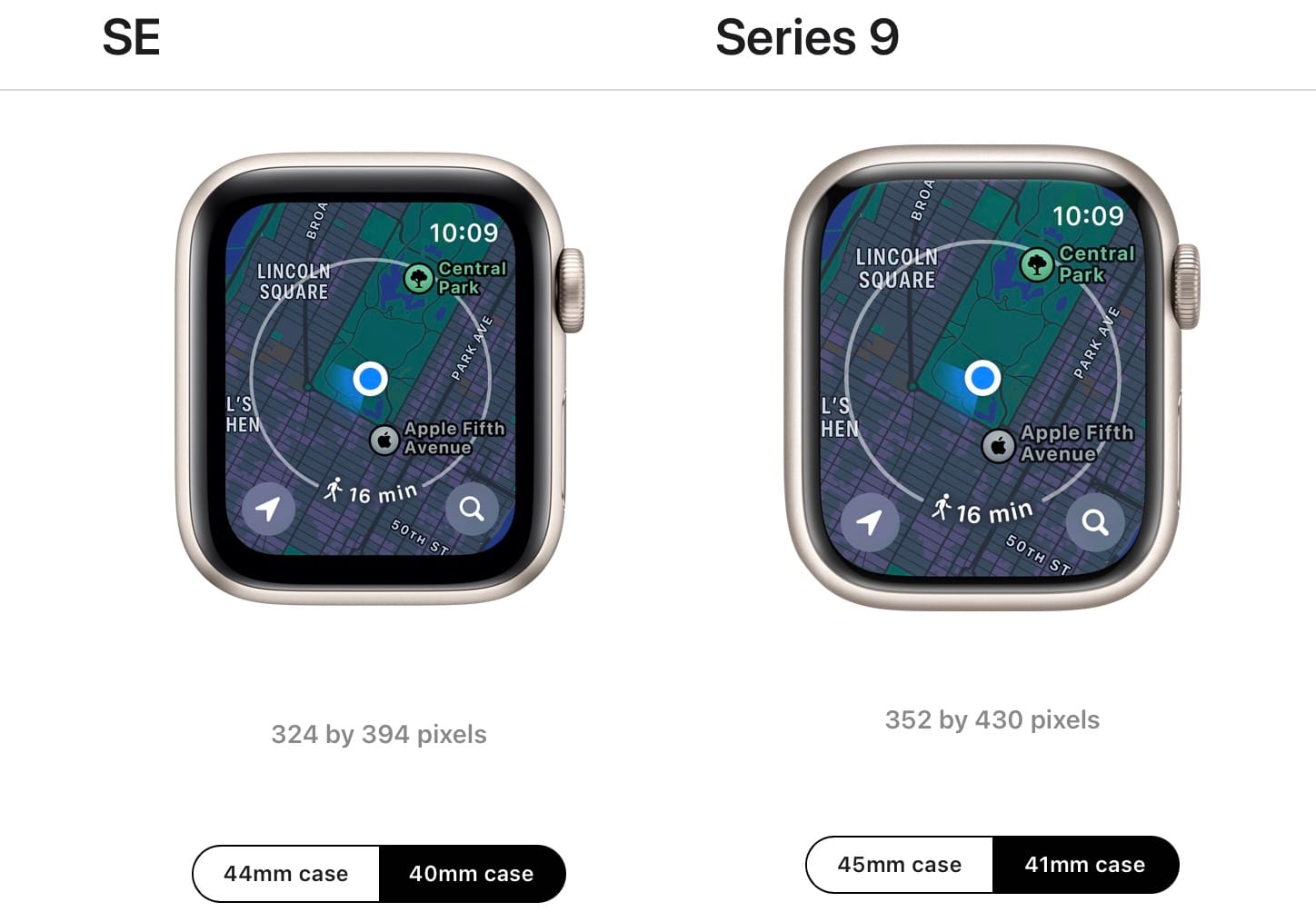
Fast forward to the Series 7 (and later Series 8 and Series 9), Apple continued the pixel-increasing trend, but a lot less drastically. The 41mm Series 9 has about 19% more pixels than the 40mm Apple Watch SE. The jump from 40mm to 41mm is a solid and noticeable upgrade because it provides a better viewing experience.
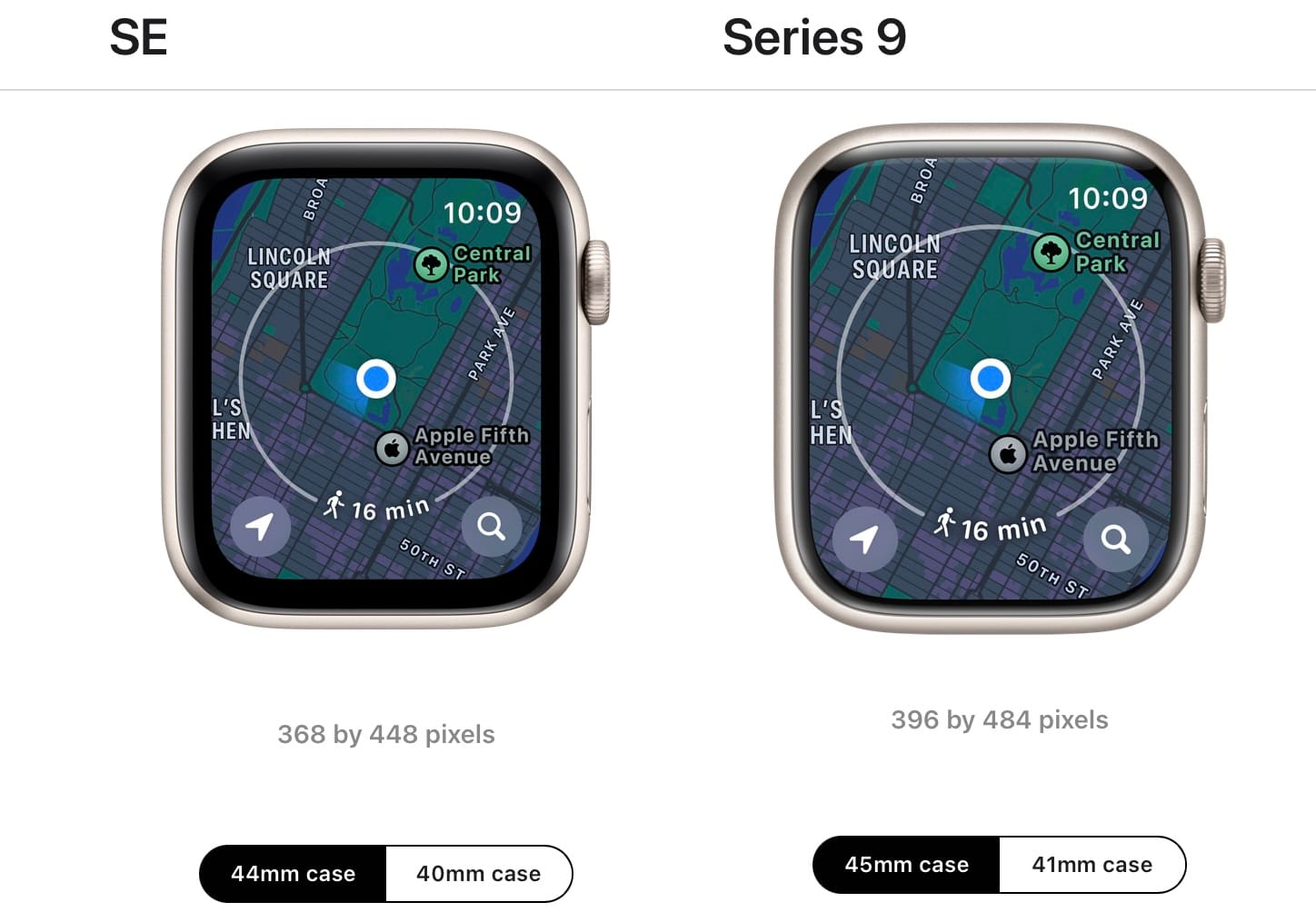
On paper, the 45mm Series 9 has 17% more pixels than the 44mm SE 2, which seems nice, but in my experience, the upgrade from 44mm to 45mm isn't as noticeable and hardly makes a difference. So If you plan to buy the 45mm size, the screen upgrade isn’t a must-have feature from its SE counterpart.
4. Processing Chip
The SE 2 and Series 8 shared the same dual-core S8 processors, while the Series 9 introduced the S9 chip, marketed as significantly faster. However, in practical use, the difference is barely noticeable; app loading times are similar across both models, and even Siri's response times are only marginally better with the S9.
The Series 9's highlight feature is "double tap," powered by the new S9 Chip. It detects a thumb-to-index finger tap by the movement in your wrist. Interestingly, a similar function, Assistive Touch, can be activated on the SE and older models, in the accessibility settings, offering similar performance.
Finger gestures as inputs have potential, especially as Apple's Vision Pro gains adoption. And double tap was helpful in two instances like stopping a timer with messy hands while cooking or holding a baby. However, for general use, it was still easier to use my right index finger to stop timers or answer calls because this feature demands precise positioning. Double tap works best when the watch face is up and angled towards your face–it rarely works when by my side.
Skipping songs via double tap is useful but too limited because it only works when the music playback screen is active. This is inconvenient during workouts as the playback controller isn't automatically active, requiring swapping left before using the gesture to skip songs. Future updates should offer more customization, like assigning specific actions to double-tap based on the active app.
Double tap initially excited me about the new Series 9, and I'm glad it exists, but it's not quite there yet. For SE users interested in gesture control, a similar experience is achievable without the new chip, which doesn't give the Series 9 much of an advantage.
5. Battery
The Series 9 shows a modest improvement in battery life over the SE. The 40mm SE has a 245 mAh battery, while the 41mm Series 9's 282 mAh battery offers a 15% boost. In my tests, both watches, with the Series 9's Always-On display active, lasted over 34 hours. However, disabling Always-On on the Series 9 extended its life by an additional six hours.
For the larger models, the 44mm SE's 296 mAh battery is slightly outpaced by the 45mm Series 9's 308 mAh battery, a mere 4% increase. With Always-On, the Series 9 lasted 36 hours compared to the SE's 41 hours. Disabling the Always-On added about seven extra hours to the Series 9's battery life, which is two more than the SE.
Keep in mind, my testing included two hour-long workouts and eight hours of sleep tracking with cellular disabled. When your phone is connected to LTE or WiFi without your phone nearby, it’ll lose a few more percentage points per hour. Your results will vary.
Ultimately, the difference in battery life between the Series 9 and SE 2 is minor, especially for the larger models.
A notable edge for the Series 9 is its faster charging rate, reaching 80% in about 45 minutes and fully charging in 75 minutes. While the SE takes around 2.5 hours for a full charge. This rapid charging is handy for sleep tracking. Apple claims just eight minutes of charging can support eight hours of tracking.
6. Premium Materials
The SE offers three aluminum case colors (midnight, starlight, and silver) with an Ion-X glass display, while the Series 9 adds two more colors (pink and red) with an upgraded Ion-X glass that's more resistant to cracks. If you're eyeing the base model SE at $249 or the Series 9 at $399, the material differences aren't significant.
For those not constrained by budget, the stainless steel models with sapphire glass, which are more durable and scratch-resistant than Ion-X glass, are a worthwhile splurge. The stainless steel build was my go-to reason for choosing the pricier Apple Watch models over the SE in past years.
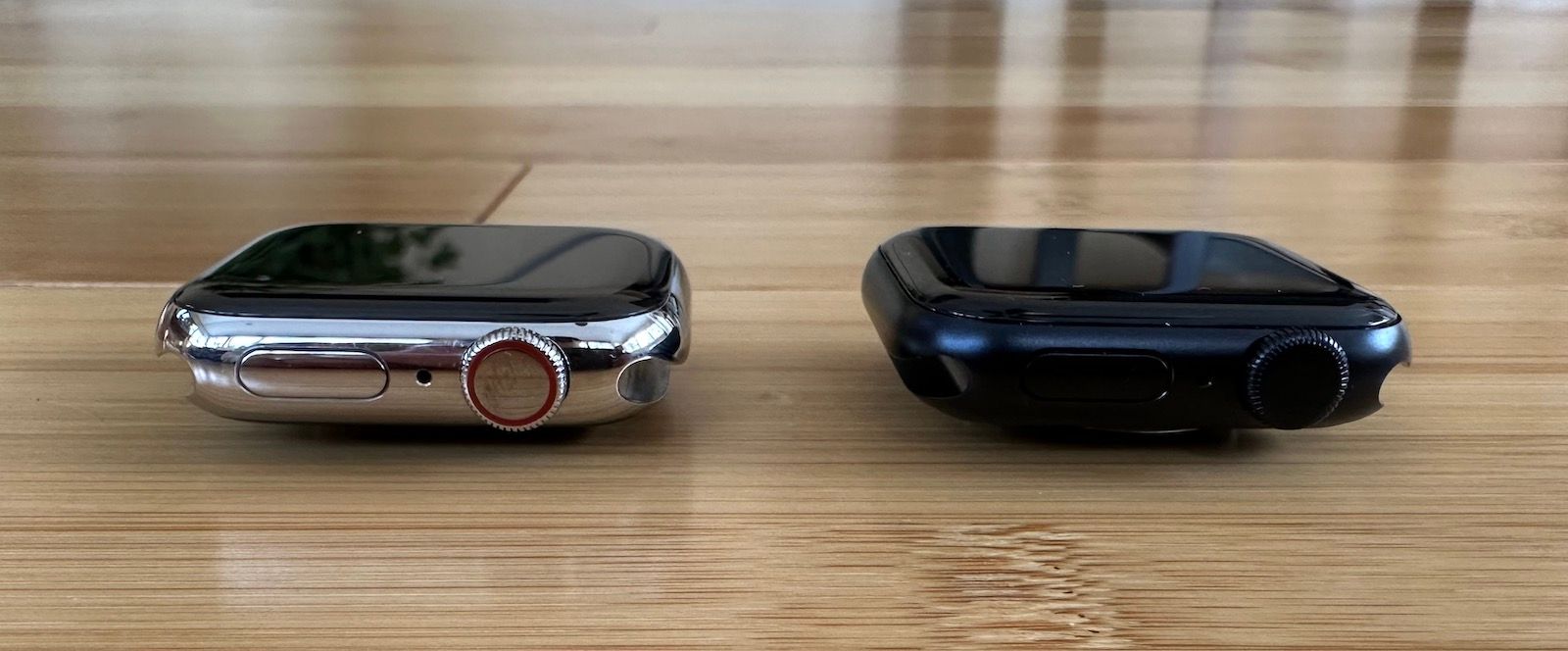
However, now that the Apple Watch Ultra is on the market, the stainless steel Series 9 is less appealing to those seeking better build materials. The Ultra 2 comes in titanium and has the same sapphire glass as the stainless steel models with a similar price tag. It initially seemed like a niche choice for extreme sports athletes, however, now see it as just a pro version of the Apple Watch, and great for those who prioritize build materials, as long as its bold design suits your taste. If not, the Series 9's stainless steel options in three attractive colors won’t let you down.
Which is best for you?
Apple Watch Series 9
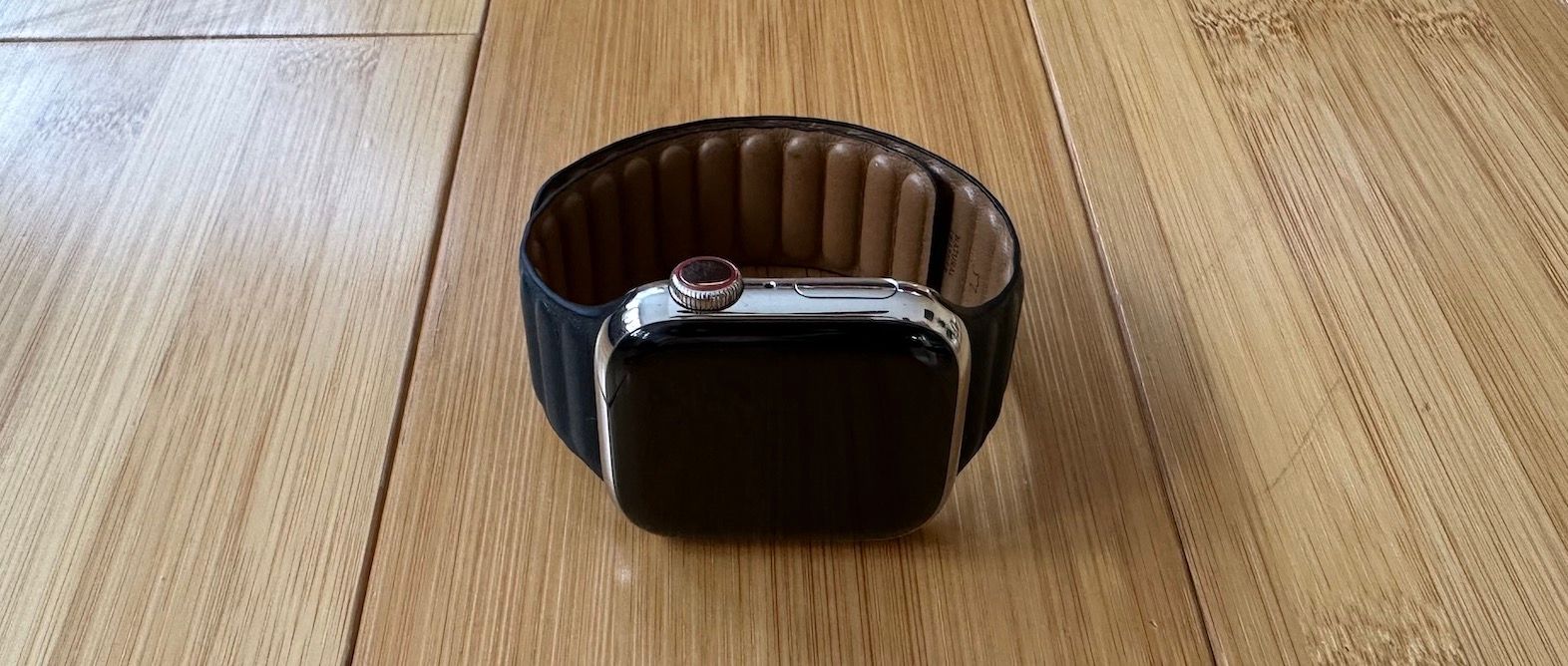
- Hardware (A+)
- Features (A+)
- Appearance w/ Stainless (A+)
- Appearance w/ Aluminum (C+)
Get the Apple Watch Series 9 if you want an Always-On display that's slightly larger than the SE. The ECG, temperature sensor, precise phone finding, extra brightness, and keyboard are all useful features, but not enough to be game-changing. Typically, I'd recommend the high-end, stainless steel Series 9 if build quality is important to you, but now the Apple Watch Ultra fills that need better.
Apple Watch SE 2
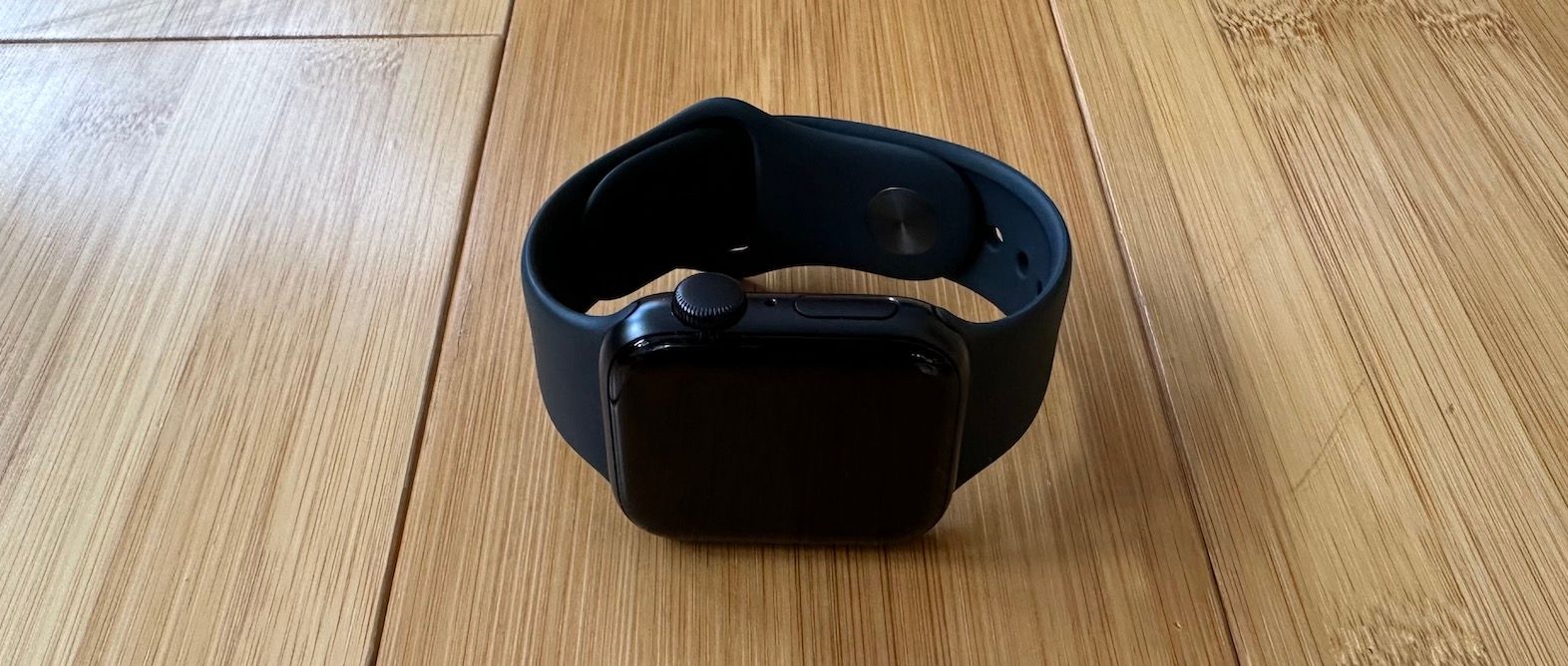
- Hardware (A)
- Features (B)
- Appearance (C)
Get Apple Watch SE if you want the standard aluminum finish and don’t mind the screen turning off when it’s not in use. The SE is a fantastic value because it delivers similar speed and has all the important features that are found on the Series 9. The substantial sacrifice for most users is the lack of an Always-On display, which I’ve found to be overrated after four years of using it.




